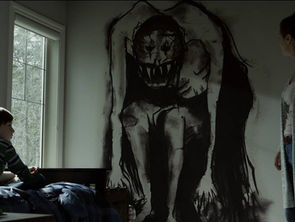top of page
Search


EMAV Film Review: Brandon Christensen’s 'Z' Offers Suburban Suspense
Las Vegas-based filmmaker Brandon Christensen’s first feature, 2017’s “Still/Born,” was about a mother dealing with a malevolent entity...
Josh Bell
May 7, 2020


EMAV Film Review: The Dam Short Film Festival displays a diversity of work
There were quite a few administrative changes behind the scenes before this year’s Dam Short Film Festival, but the result for film-goers...
Josh Bell
Feb 26, 2020


EMAV Film Review: Las Vegas Jewish Film Festival bears witness to history
Although education has always been a big part of the mission of the Las Vegas Jewish Film Festival, in recent years the event has...
Josh Bell
Feb 1, 2020


EMAV Review: 'Valiant' puts Vegas Born hockey in the spotlight
The feel-good story of the Vegas Golden Knights’ remarkable first season in the National Hockey League meets the feel-good story of Las...
Josh Bell
Nov 30, 2019


EMAV Review: Las Vegas Queer Arts Film Festival
For its second year, the Las Vegas Queer Arts Film Festival moved to a new venue and expanded its schedule, and after hosting sold-out...
Josh Bell
Nov 16, 2019


EMAV Review: Sin City Horror Fest 2019
The first two years of Sin City Horror Fest featured some entertaining, creative and gruesome indie horror movies, often playing to very...
Josh Bell
Sep 24, 2019


Underground Arts: Review Show - Four Las Vegas Short Films
A New Show for the Las Vegas "Underground" Arts Scene! The best show for the Las Vegas "Underground" Arts Scene! Jeremy & Olivia review...

Eat More Art Vegas
Aug 18, 2019


EMAV Review - The Amazing Johnathan: One Vegas icon, two documentaries
When longtime Las Vegas comedy magician The Amazing Johnathan announced in 2014 that he had been diagnosed with a severe heart condition...
Josh Bell
Aug 12, 2019


Don't miss the Awesome Movie Year podcast!
With hosts, film-critic Josh Bell and comedian/film-maker Jason Harris As a movie critic, I’m always disappointed to hear people claim...
Josh Bell
Aug 8, 2019


EMAV Review: Las Vegas Film Festival reflects a strong audience amid a struggling identity
Although its position as the premier film festival in town has been secure for a number of years, the Las Vegas Film Festival still seems...
Josh Bell
May 10, 2019


EMAV Review: The 5th Nevada Women's Film Festival fosters enthusiastic audience
In just five years, the Nevada Women’s Film Festival has gone from a small gathering put on by a few dedicated organizers to one of the...
Josh Bell
Mar 29, 2019


5th Annual Nevada Women's Film Festival at Eclipse Theatres
Join us for the 5th annual Nevada Women's Film Festival, March 21-25, 2019! The festivities kick-off Thursday evening with Nevada Woman...

Eat More Art Vegas
Mar 19, 2019
bottom of page